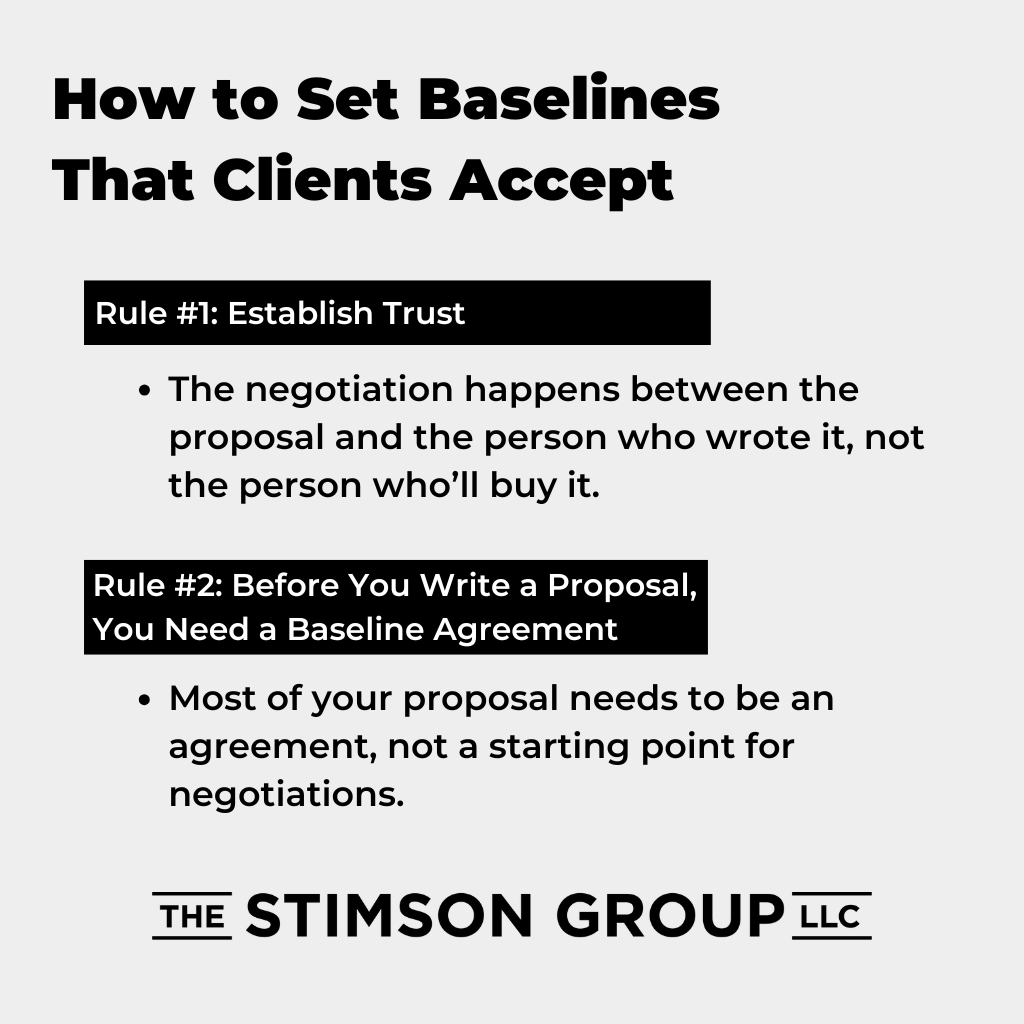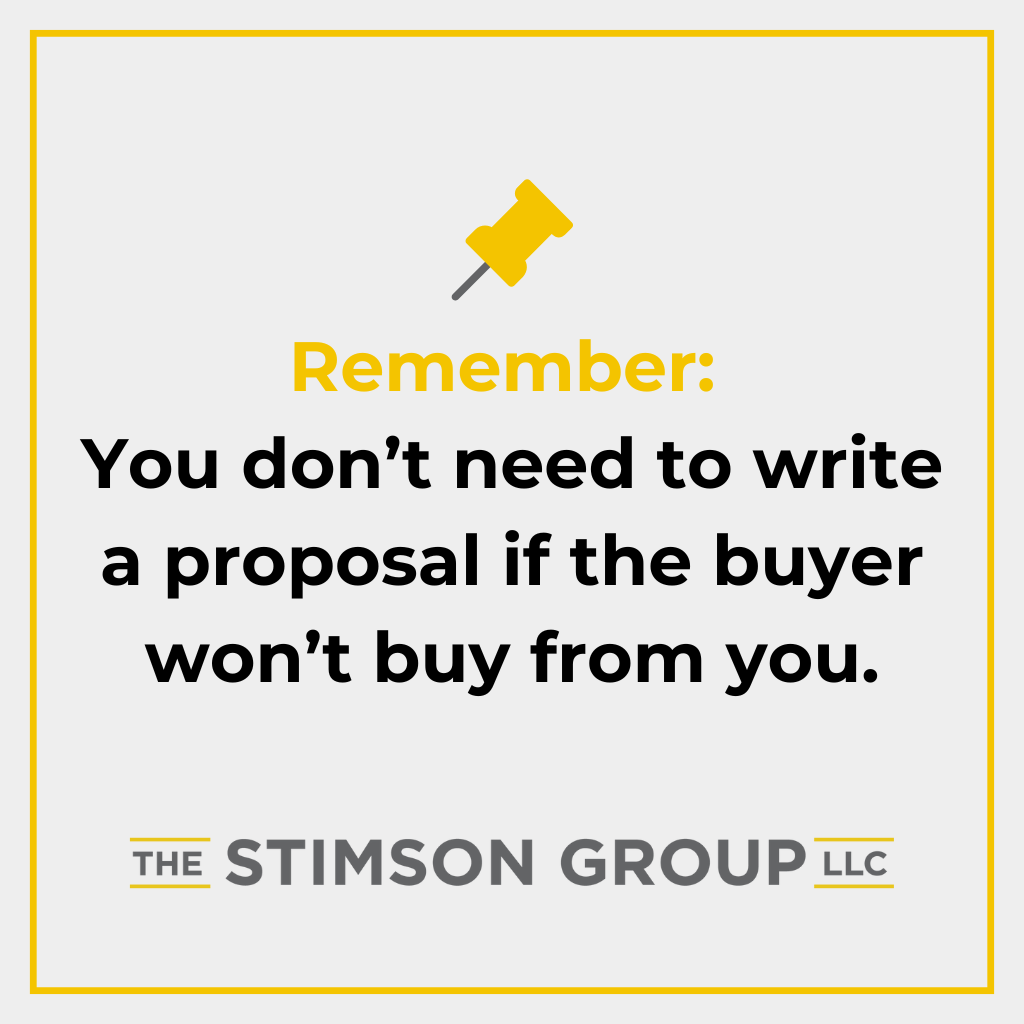
Listen instead on your Monday Morning Drive:
If you want to grow sales — and honestly, who doesn’t — you need to stop negotiating with yourself.
You know the kind of self-talk I mean: “The client won’t pay that much.” “I need to be at this price.” “I can skip this step.” “I don’t need to present the proposal in person.” “The buyer needs a proposal before they’ll give me a budget.”
This self-talk replaces tested, reliable steps that lead to better deals with better buyers. If you’re using self-talk instead of process, you’re trying to make deals with bad buyers.
Last week, I explained my three-call process for closing better deals with awesome buyers. Step three in that process was the proposal presentation meeting. Today, I want to drill down into what goes into those proposals and share some practical considerations.

Rule #1: Establish Trust
Look in the mirror. Do you trust yourself?
Most proposals I see from event production sales folks are one-sided negotiations — a waste of both parties’ time. The negotiation happens between the proposal and the person who wrote it, not the person who’ll buy it.
When you haven’t completely uncovered your buyer’s budget and/or tastes, you end up negotiating with yourself. A proposal that doesn’t reflect exactly what the customer wants, needs, and can afford will instead reflect your insecurities, fears, and concerns.
That’s not a strong position. Not a good look, as we say.
Rule #2: Before You Write a Proposal, You Need a Baseline Agreement
Proposals are speculative. Agreements are pre-negotiated.
Most of your proposal needs to be an agreement, not a starting point for negotiations. How do we get there? By following the process.
The Baseline
The baseline is the minimum requirement to meet the practical needs of the project. It’s the budget you can’t go below. There’s nothing left to eliminate.
While you may establish a baseline range in early conversations, you need a concrete baseline budget when you develop the proposal. Put it there and do NOT let it be a negotiating point:
“I can’t change the baseline. This is what it takes to do the job. I have negotiating room in other areas, but we need to agree on this.”
If you and the buyer agree on the baseline scope of work, you can table the topic. And if you establish a baseline, it’s easier to get paid because the baseline won’t change.
If you’re waiting for the client to decide on options before they’ll sign the proposal, you’ve written the wrong proposal.
Think about how often salespeople say, “This job will confirm, but we don’t know what they want to do yet.” At least 80% of that project will be needed — get the client to agree to that. We may not know every enhancement, but the baseline is not negotiable.
Pricing the Baseline
If you’re tired of line item pricing, baseline is your friend. Use a “not to exceed” number with baseline scope of work language. You don’t have to detail everything.
When they ask, “What does that include?” you say, “Everything it takes to accomplish the scope of work, plus a few extra yesses, for the things that often happen.”
You should be able to calculate a baseline price on the fly because you’re experienced. If you use the proper selling protocol, you can introduce the baseline budget on your follow-up call (call #2).
The beauty is that you do baseline literally (and I’m using “literally” literally) all the time. Every job has a baseline — a minimum requirement.
You could write 10 baseline budgets covering 90% of all the jobs you do in a year. You may not have the exact number for each baseline, but you will have the scope of work.
Baseline audio, baseline lighting, baseline graphics, baseline speaker support — all the baselines you need, you already have. You do them all the time.
So, baseline is simple: scope and one price.
Enhancements and Options
The second part of your proposal’s service section is about enhancements to the baseline.
Some enhancements may already be chosen — they may be requirements — but they’re in addition to the baseline because they’re contingent on it.
Without the baseline, you can’t buy the enhancement. And remember, enhancements can have enhancements. You can’t buy the image recording add-on without the baseline, and you can’t buy the streaming without the image recording. These are contingencies.
In other words, lay your proposal out logically: baseline, enhancement, enhancement.
The third section contains true options. Don’t itemize options like you would for enhancements. That’s a waste of time.
You can say, “Here are all the things you mentioned as ‘would be nice to have.’ All of these together would add a range of dollars to your budget.” That’s all you need to say.
If they ask for more detail, you can respond, “Are you changing some of these options to enhancements? If they’re enhancements, we’ll incorporate them, but we’ve already been through this discovery process.”
You won’t get the pushback on this that you think. Again, you’re negotiating with yourself.
Terms and Conditions
At the proposal presentation meeting, ask important questions like, “How much additional budget would you like to allocate at this time for enhancements and/or options?”
Then say, “Great, let’s find the best way to use that amount.” It is also perfectly acceptable to agree on the baseline now, and table the enhancements and options for later.
You can have different decision deadlines and payment schedules for options. Don’t hold up the entire job while they figure out what they want to do with the options. You don’t even have to hold up the job for enhancements.
The buyer can sign the agreement on the baseline only, and you can give them an alternate deadline for enhancements: “If you sign your agreement by March 1 instead of March 15, I will give you an extra week to decide on enhancements. That lets me start working on your project and lock everything in.”
The Right Way to Present Budget Ranges
When citing a range, don’t say, “I think that would cost $15,000 to $18,000.” That’s negative.
The positive way is, “The most I would recommend you spend for this is $15,000 to $18,000. With that budget, you’ll get everything you and I have discussed, plus our expert show team can use many capabilities to enhance your experience and outcomes.”
Wait for their response. If they say it seems like a lot of money, you can reply, “I understand. Your base criteria is only $10,000. Between that and the $15,000–$18,000 I’m recommending, there are many options for any discretionary budget you can add.”
Don’t write a proposal until you have a verbal agreement on the baseline budget, you’ve reviewed the value of enhancements and priorities, and you’ve removed anything that needs to become an option or be tabled altogether.
Remember: You don’t need to write a proposal if the buyer won’t buy from you. If they don’t agree to move forward with what you’ve discussed, there’s little chance they’ll actually buy from you, no matter how wonderful your proposal might be.






Leave a Reply